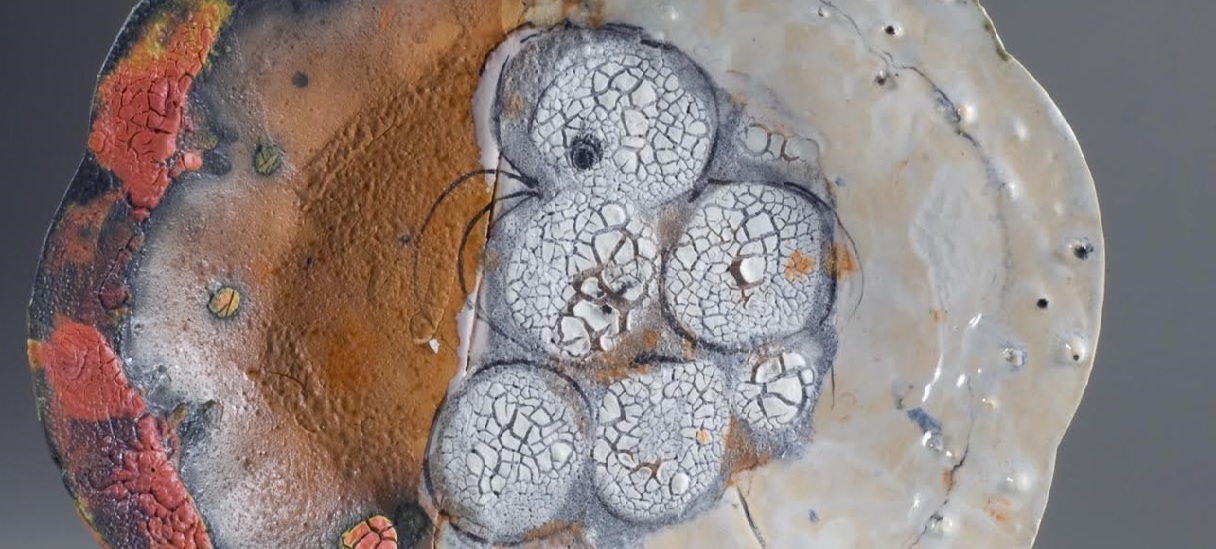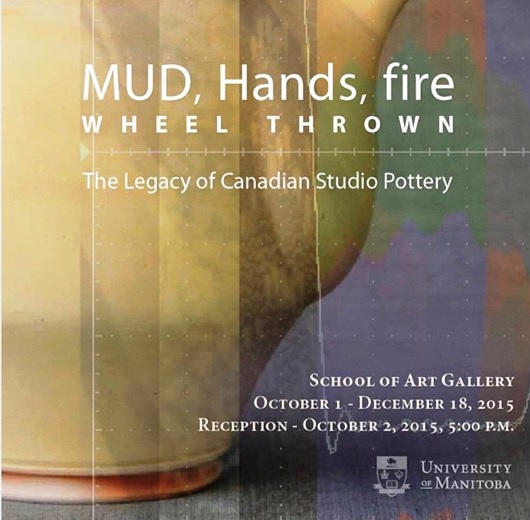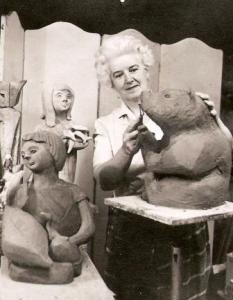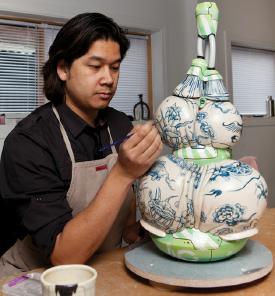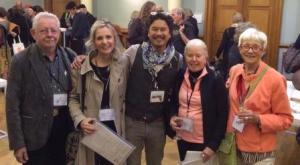
Good things continue to come out of Atlantic Canada and Goose Lane Editions that add more professional insight, and documentation to the story of studio ceramics in the region. The latest is a heavily colour-illustrated catalogue for the retrospective exhibition, Walter Ostrom: Good Earth: The Pots and Passion of Walter Ostrom. Although the exhibition ran from October 2020 to March 2021 at the Art Gallery of Nova Scotia the more recent catalogue is a solid and much needed history of Ostrom’s life, work, and philosophy.
The exhibition was curated by Shannon Parker with Judy Hollenbach and Sandra Alfody.
Although most know of Ostrom’s work through his earthenware, the catalogue gives details of his artistic development, his experimentation in clays, glazes, new forms. and even his glance into 3D software. What comes across is passion: passion for the medium; passion for never staying in one place artistically; and a passion that he communicated to his students.
The title is a play on several levels ranging from Ostrom’s love of earthenware and his love of plants and nature arising from the earth.
There are also explorations of his need to break free from limitations and conventions be they of the political or art vs craft discussion.
The catalogue consists of fourteen sections, eleven of which contain the meat of the Ostrom story, with eight contributing authors.
Walter Ostrom by Paul Greenhalgh provides a short overview of Ostrom in a broad historical context but he sets the stage with this summary”
” Artist, teacher, historian: Walter Ostrom is a force of nature, a whirlwind of energy, and a vital contributor to Canadian and international art.”
Ceramics at the Edge by Alan Elder touches on the revolutionary, almost anarchistic early leanings of Ostrom. This shifts into an overview of the development of crafts in the early ’60s looking at the changes in attitude in professional crafts the and the establishment of educational centres and schools, and the influence of regionalism in Canada. The chapter shifts into an analysis of NSCAD, its development, reorientation and reprogramming to newer theories about craft and design.
History as Content/Tradition as Idea. The Art of Walter Ostrom by Ray Cronin looks at Ostrom’s artistically disruptive changes in his art that happened at NSCAD under Garry Kennedy, and the explorations that Ostrom took in conceptual art in concert with an international array of artists and ceramists. This would lead to explorations in post modernism as he combines the shapes and motifs of widely different cultures into one piece: for example Chinese and Greek combinations.
Walter Ostrom—Master of Earnestness, Prince of Curiosity by Mary Boyd touches on the influence of other cultures and personalities on Ostrom and delves into extensive detail on Ostrom’s love of and influence on modern Chinese ceramics, with visits to China including Jingdezhen. Ostrom was also an international influencer in a tremendous cross fertilization between his Australian and many Chinese associates and fellow potters, who themselves became major leaders in ceramic production and teaching.
Walter Ostrom’s Passionate Pedagogy by Julie Hollenbach not only deals with Ostrom’s philosophy and again, his love of Chinese and Japanese art and history, but also his investigations with items such as Lantz clay, particularly from the student perspective.
His teaching style was filled often with humor and eccentricity but also felt relaxing. The studio was not a tight rigid or serious place. Ostrom’s students universally talk of the excitement of his teachings:
“Along with his championing the use of Lantz clay, Walter also pushed his students to abandon their preconceptions of clay and their assumptions regarding how to make ‘good work.'”
Especially remembered are his experiments with and without pottery wheels. At first he removed the wheels from the studio and challenged students to make the largest pots they possibly could without the use of the wheel. Later he would suspend wheels from the ceiling to challenge students to make pots using gravity and centrifugal forces. Another time he would have students make pots without using their hands and they would then use or make pots with their faces feet and elbows:
“This would reshape students expectations about the possibilities of working with clay and throwing forms, and ultimately pushed them beyond the traditional and familiar.”
What you see is not what you get: The pots of Walter Ostrom by Ursula Hargens. Hargens, a former student of Ostroms, analyses the complexities of clay, form, and subject matter that Ostrom used and developed. From stoneware he moved into and maintained a love of earthenware, upending the supremacy of stoneware and porcelain. Lantz clay was to be one of the signature foundations of his work. He involved himself in political and historical topics that might surprise many: for example his Lady Macbeth soap dish series is a protest against American and British air strikes against Iraq in the early 2000.
Although he might have started with something as basic as a flower pot his forms became complex and evolved not only through manual manipulation but also through explorations in 3D imagery of forms, and the exploration of interior and exterior surfaces, shapes and nuances.
Hargens’ essay is followed by a forty eight page catalogue of large, superbly coloured photographs indicating the range of Ostrom’s work: his shapes, his processes, his designs, his colours, and his subjects. The detail seen in each of the pictures is amazing in that each gives another indication of what Ostrom is capable of and interested in accomplishing. Many who know of Ostrom have a limited range of appreciation of the scope of his forms, and inspirations. This mid-book catalogue section is an eye opener.
Walter Ostrom: Impressions by Emily Galusha. The last part of the catalogue looks at a more personal, biographical side of Walter Ostrom. Galusha delves into not only his history, ranging from early biochemistry studies up to the present, but also the feelings and thoughts that Ostrom and his wife, Elaine, both share and how they compliment each other in their relationship and their evolution together. Galusha binds together insights into the movement and the relationships between the various influences on Ostrom and the things that he will carry forward or discard once he has resolved an issue or a process.
2014 Regis Master Lecture edited by Emily Galusha. This final major section is a presentation by Ostrom. It is deeply personal. The man speaks about his own life and art that have an intimacy seldom seen in ceramic literature.
Curriculum Vitae Walter Ostrom, C. M. This resume is extensive. The calendar of education exhibitions, awards, teachings, and publications is a potential treasure trove for further research.
The final section is a much needed list of the works to supplement the earlier pictorial catalogue.
It is obvious that Walter Ostrom had much input to the development of the exhibition and catalogue. The title says its all: Pots and Passion. One can only hope that the quality and depth of such books on ceramics will continue.
—————
Good Earth: the pots and passions of Walter Ostrom. Hardcover, 175 pages. 23.5 x 28.7 cm cover; text 21.6 x 27.9 cm. Published by Goose Lane Editions, Fredericton, New Brunswick. March 16, 2021; $50 Canadian. ISBN: 9781773101972

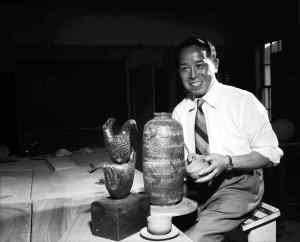
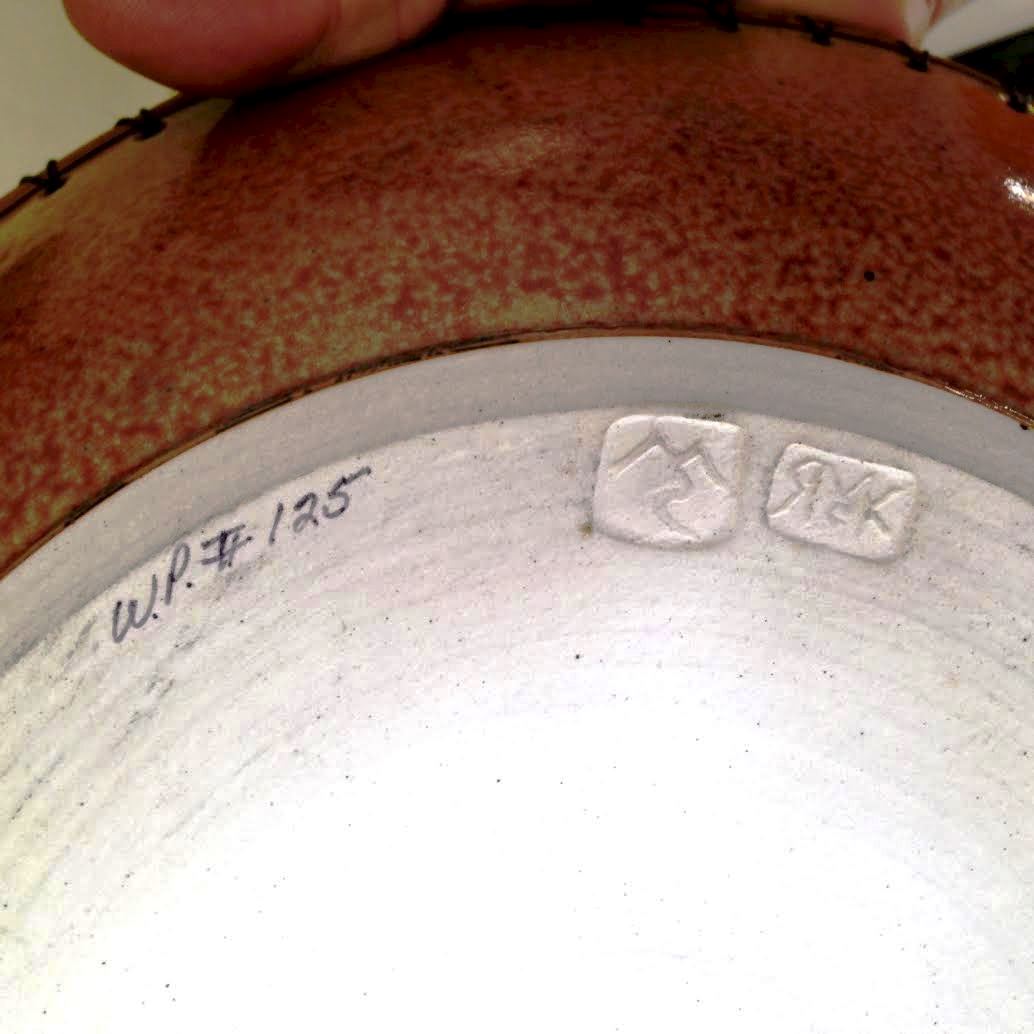
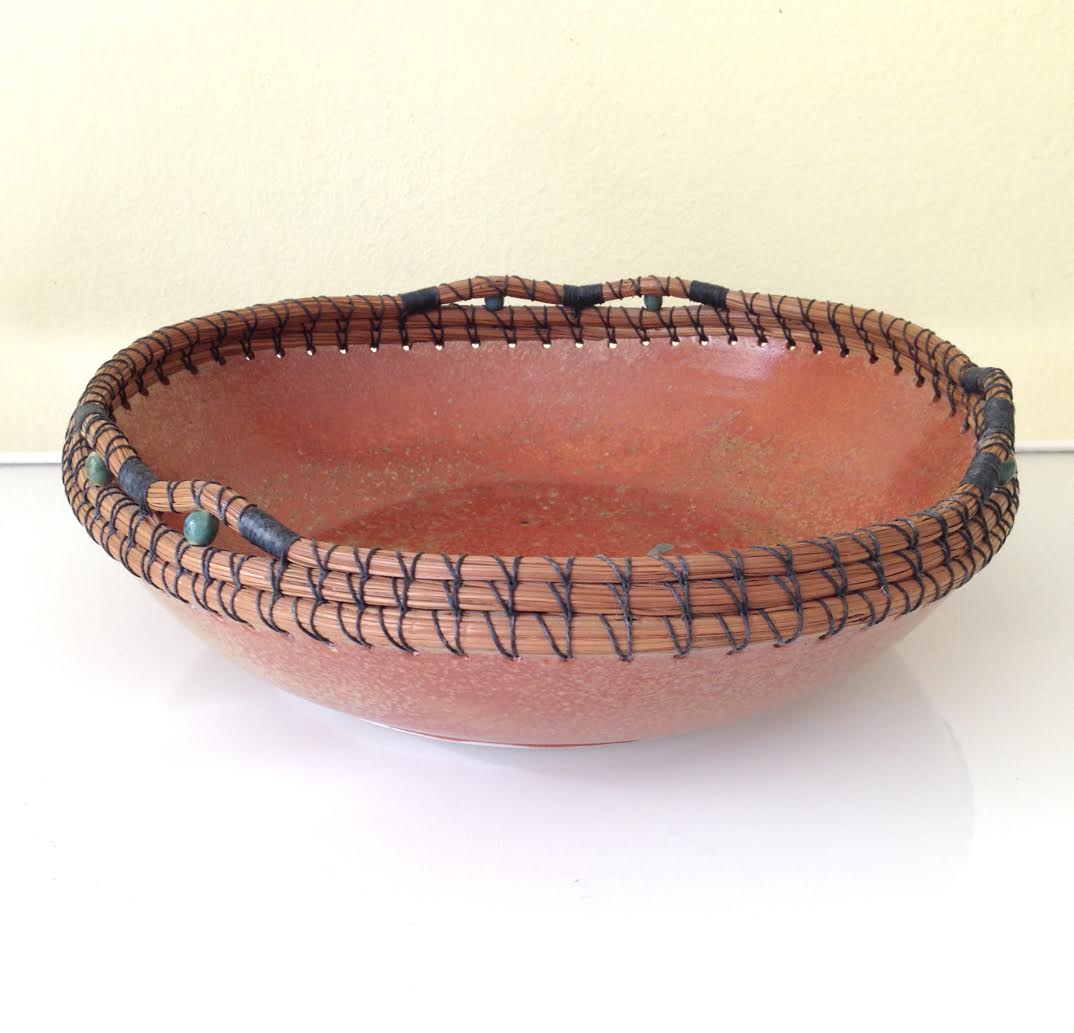 Marks and more marks. Does anyone recognize these marks on the base of this bowl? I do know the marks and bowl style are not Ruth Gowdy McKinley’s but whose are they? The bowl was bought on the secondary market. Enquiring minds want to know.
Marks and more marks. Does anyone recognize these marks on the base of this bowl? I do know the marks and bowl style are not Ruth Gowdy McKinley’s but whose are they? The bowl was bought on the secondary market. Enquiring minds want to know.